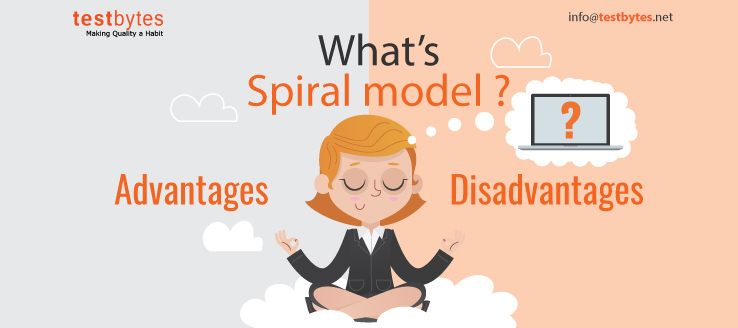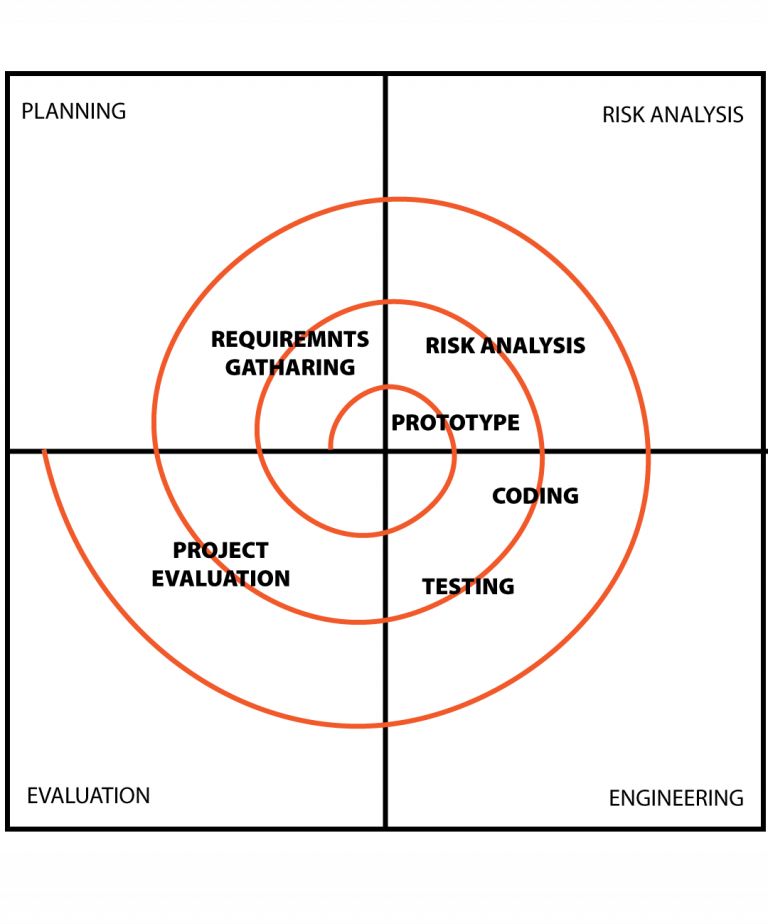
What’s Spiral Model? Advantages and Disadvantages
May 20th, 2019

Spiral model is the combination of both sequential model and prototype model. The spiral model is specifically designed for projects which are huge in size and requires regular enhancements. The spiral model is somewhat similar to the incremental model but more emphasis on risk analysis, engineering, and evaluation.
To understand better have a look at the sequential diagram about the model!

Phases involved in Spiral Model
Planning phase: All the required information about the project will be gathered in this phase. Requirements such as BRS (business requirement specification and SRS (system requirement specifications), design alteration, etc. will be done in this phase. Cost estimation, scheduling the resources for iteration, etc. also happens in this phase.
Risk Analysis: Requirements of the project is studied and brainstorm sessions are conducted to figure out potential risks involved. Once the risk has been identified proper strategies and risk mitigation methodologies will be planned.
Testing phase: Testing alongside developmental changes will be done in this phase. Coding, test case development, test execution, test summary report, defect report generation, etc. happens in this phase.
Evaluation phase: Customer can evaluate the tests and can give feedback before the project goes to the next level
1st iteration – Activities such as panning, initial risk analysis, engineering evaluation, requirement gathering happens.
2nd iteration – Higher level planning, detailed risk analysis, evaluation happens in this phase
3rd iteration – Testing related activities such as coding, tool selection, resource allocation, which test to choose? Etc. happens in this phase.
4th iteration – In this customer is the key where they can evaluate the entire process and express their option regarding it.
When to use the spiral model?
- When cost and risk is high
- Medium to high-risk project
- Frequent release requirement
- Complex project
- Projects that require constant change
- Not feasible long term projects owing to the change in economic priorities
Advantages and disadvantages of spiral model
Advantages
- Risk management is easy in this type of model. When you are handling expensive and complex projects, risk management is a must. Moreover, Spiral model has the ability to make any software testing project transparent.
- Customer can see and review the test and different stages
- Projects can be separated into various parts to ease the management difficulty
- Documentation control is strong in this type of methodology
- Project estimate will tend to be more realistic as it progresses.
Disadvantages
- Cannot be used for small projects as it can be expensive
- A vast amount of documentation owing to several intermediate stages
- The end date of the project cannot be calculated at the early stages of the project
- Complex process
- High expertise is required to run the model

Conclusion
Each spiral that can be seen in the diagram above acts as a loop for a separate process in testing. the four main activities, planning risk analysis, testing, coding and project evaluation will be repeated again for the required amount of phases for any project.
Implementation of the model requires personnel who are highly experienced in it since the Spiral model is exclusively meant for larger products and risk analysis the most important feature.


 Software Testing Events
Software Testing Events App Testing
App Testing Web App Testing
Web App Testing Game Testing
Game Testing Automation Testing
Automation Testing Load Testing
Load Testing Security Testing
Security Testing Performance Testing
Performance Testing Hire a Tester
Hire a Tester





